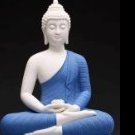[Myanmar] Govt Peace Group Needs Fresh Faces
-
Recently Browsing 0 members
- No registered users viewing this page.
-
Topics
-
-
Popular Contributors
-
-
Latest posts...
-
161
Trump just made an idiot move
Why did you not want to find out for the last four years? -
169
Trump's most ardent supporters are in revolt
Oh you better believe he cares at this point in time, this is one of the biggest conundrums of his political career, normally his followers are very obedient and very compliant, and that does not seem to be the case this time around.. You don't spend years talking about conspiracy theories only to deny that they don't exist, you nimwit! Don, you got caught out for being dumb, you got caught out for who you are, you got caught in one of your millions of lies, and you got caught with your pants down, and that is not a pretty sight. -
278
SIDS - Sudden Infant Death Syndrome - Is Caused By Vaccines
Do you also believe the earth is flat?- 1
-

-
66
Civil war in Europe?
Yep, I think eventually there will be a revolution in one of the European countries, then others will follow. Unfortunately this is the only way to solve the horrible immigration problem. -
1
Bought another Omron BP machine from Lazada. Is it real?
What do all the other reviews say? They would post photos and probably comment on it -
40
The official sinsod calculator for Thai marriages
It does stay in the family.........😉
-
-
Popular in The Pub





.thumb.jpeg.d2d19a66404642fd9ff62d6262fd153e.jpeg)










Recommended Posts
Create an account or sign in to comment
You need to be a member in order to leave a comment
Create an account
Sign up for a new account in our community. It's easy!
Register a new accountSign in
Already have an account? Sign in here.
Sign In Now